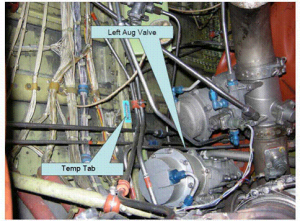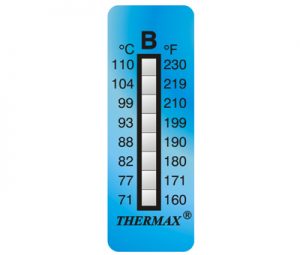Thermax 8 Levels on DC9 Aircraft
Sector: AEROSPACE

Project
Electrical temperature switches are fitted on board DC9 aircrafts that indicate to the flight deck when the temperature in the tail compartment has exceeded the allowable temperature. This flight deck indication can send a taxiing aircraft back to the gate and sometimes to return from a flight.

Aim
During operation of the environmental control system, (housed in the tail compartment), the enclosed area is typically around 38°C/100°F. The maintenance operators needed a way to check for any increases in temperature that could cause issues whilst the aircraft is in use.

Solution
Thermax® 8 Level B Labels are installed in the unpressurized tail compartment of the aircraft. The labels are installed on a structure adjacent to areas of the pneumatic system where leaks may occur. They are checked weekly as part of the aircraft.







